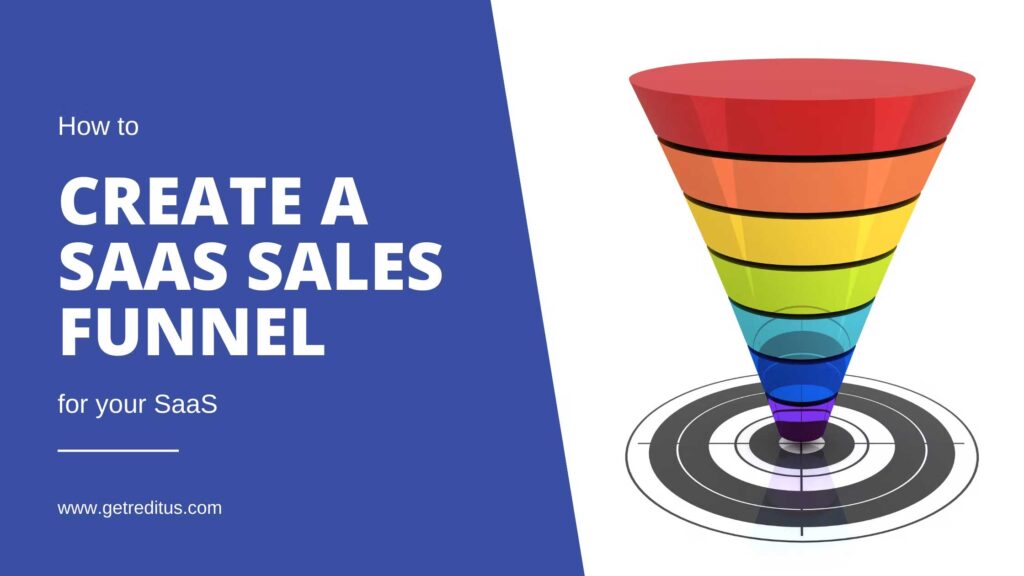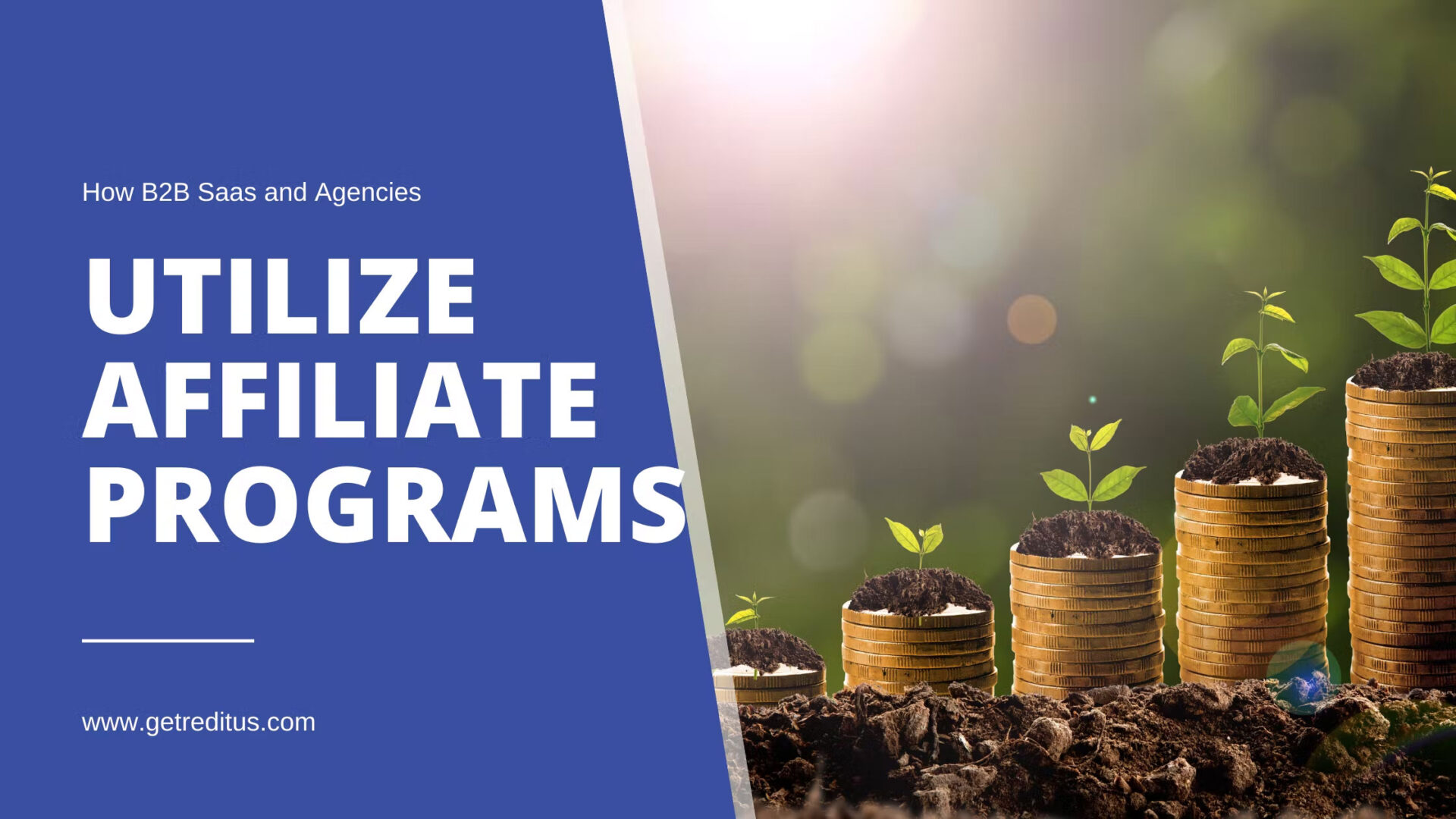How to Properly Create a SaaS Sales Funnel

Ten years ago, you would not need a SaaS article on sales funnels. The SaaS market had not become as developed as it is today. Each SaaS product could easily find its target audience.
Times have changed, and there is so much white noise on the internet. Customers usually have numerous choices, but they might not know which product will produce the right solutions. Therefore customers have become more selective, demanding, and cautious.
We at Reditus believe that you can not force people to purchase your SaaS product in today's world. Customers face so many risks that they will quickly get off the hook with added pressure.
However, you should carefully guide potential clients through your selling process. Then when they are ready to purchase your product, they will do so. To become a customer, they must reach the bottom of your SaaS sales funnel.
We created this article to help you better understand the customer acquisition process. Therefore you should be better able to build your SaaS sales funnel and make the most out of it.
So, let's start with some basics.
Table of contents
What is the Sales Funnel, and Why is it Essential?
Imagine meeting an individual for the first time. If your first impression of them is positive, then you might gain some interest. You will want to know this person better if you have gained interest. There might be a specific way they think that interests you. As you see this person's thoughts, you understand their values, and your trust level gradually increases.
You feel like you are friends already, so you are prone to follow their advice and listen to their opinion. You provide your new friend the power to influence your decision at this stage.
Instagram influencers have mastered the craftwork of emotional sales funnels to sell their products. In the SaaS world, the mechanism is similar to building relationships with potential customers to turn them into clients.
The SaaS sales funnel, or conversion funnel is a multi-staged selling approach that begins with constructing the awareness of your brand. Therefore it is crucial to get into your clients' minds as this process extends beyond the first payment.
Unlike e-commerce businesses focusing on getting new customers through short marketing promotions, the SaaS customer acquisition process requires a more delicate approach. Customers need to be sure that your product is the best solution for their problems.
Interacting with leads guides you to the bottom of the sales funnel. However, your ultimate goal is to raise their trust through engagement, expertise demonstration, and value communication. When you build a customer acquisition strategy, you want the customer to keep reading and focus on your dedicated material.
On the pathway to buying, buyers hit different touchpoints. Thus, communicating with them with your advertising and content may powerfully impact the conversion. Comprehending your SaaS sales funnel will allow you to discover the openings and analyze where and why candidates drop out and never convert.
We are driving closer to the sales funnel stages, but at this point, I want you to understand that customers' journey through the funnel is entirely under your management.
What are the SaaS Sales Funnel Stages?
In the marketing books, you'll see the acronym AIDA, which stands for Awareness, Interest, Desire, and Action. The four stages describe a customer's behavior flow established on human psychology. Each step requires a unique marketing approach to seamlessly move a lead to the next funnel level.
It is crucial to stay relevant and consistent. Remember that the wrong message at the wrong time can motivate the lead to drop out of the sales funnel.
The AIDA concept has many variations, but we find HubSpot's method the most appropriate for the SaaS industry. The central B2B SaaS sales funnel stages are Awareness, Engagement, Exploration, and Conversion.
Therefore with AIDA, you are raising customers' interest. However, this might not be adequate to get them converted. You should engage your leads and produce confidence.
Also, in the SaaS world, "exploration" represents the transition stage more accurately than "desire." Desire is when people finally start showing genuine interest in your product.
You will get my idea better while learning about all the SaaS sales funnel stages, so let's move on.
Awareness: Raise Interest, Build Trust, Educate
Your potential customers are inviting questions and seeking information at this stage. They may not fully realize the problem, so they are not searching for a specific solution.
Awareness means your potential clients are becoming conscious of your company. Therefore, they likely found one of your blog posts in an organic search. They may have even come across a mention of your brand through their social media account.
Generating more leads requires you to place all your exertions into growing brand awareness. Here are some methods you can accomplish this:
- Boost your content, product, or service through paid ads
- Include PR actions into your marketing approach to gain exposure
- Improve your SEO strategy to boost traffic organically.
- Utilize Reditus to expand your market reach.

Engagement: Become a Credible Resource
As people return to your website to consume more content, they gradually move to the next stage of your SaaS funnel. The entrance to your SaaS sales pipeline stage occurs when a lead signs up for your newsletter or provides an email address to download free content.
These activities show that the client is inquisitive about your content. It signals, to you, that these unknown leads want more information and to continue educating them on your product-related topics.
The engagement phase may be the lengthiest portion of the acquisition process. As your potential clients may need to determine if they trust you enough to proceed in the purchasing process. They also want to be certain they require your specific solution to their particular problem.
Overall the customer does not want to waste money. They want to ensure they purchase the right product to solve their problems.
At this stage, monitoring how leads interact with your content is crucial. If you observe they opened numerous emails, focus your communication on highlighting the pains your SaaS product resolves.
It is time to send more tutorial articles explaining how your tool provides support for answering a specific issue or showcase examples of how your product usage benefits the customer.
Also, you can begin directing leads to your product pages. Here they can learn more about the solution features.
Exploration: Show Your Product's Values
If you carefully managed the sales funnel, you should have been able to hook in some attention to your leads. Therefore you have won their trust.
The exploration stage should emphasize your product's advantages and warm the leads up for the purchase. You persist in nurturing them with success stories, case studies, user testimonials, comparisons, and reviews.
At this point, presenting a free trial will permit leads to test-drive your product. You can provide a limited whole functionality period for their trial. During the trial, their understanding will impact their judgment on whether to become a paid client or not.
The freemium model can even be a component of the exploration stage. Emphasizing the limits of the free plan, you should unobtrusively prompt users to upgrade.
Leads may even proactively contact the sales team to request a quote. They may require more details on whether your product is the most suitable match for their deficiencies. In this case, well-trained, skilled sales representatives can seamlessly reposition the leads to the conversion stage.
Conversion: Sell and Make Customers Stay
The header's name represents the central concept. To sell is paramount, but to retain is crucial. SaaS companies are subscription-based, so it is necessary to ensure monthly recurring income. Therefore that is why concentrating on customer acquisition is a short-sighted sales approach. Retention should consistently be a portion of the company's acquisition strategy conversations.
Here is how you can improve your customers' retention:
- Send customer satisfaction surveys to obtain valuable feedback and improve your product or service based on the collected understanding.
- Propose active users to become beta-testers for your unique product for free or upgrade them. Upsell to provide your clients with more value from your product
- Create exclusive newsletters for your clients with product company news, updates, and insightful industry-related content
- Activate your users with custom-tailored promo offerings


